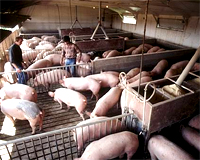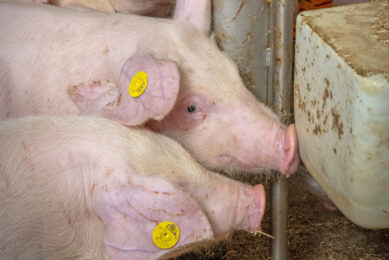US: Swine premises identification surpasses 90%

92 percent of all U.S. swine premises now have a nationally standardised premises identification number (PIN). This is of 20 December. This milestone figure, calculated by the Pork Checkoff using USDA data, represents 65,907 premises. Nearly half of these farms were registered over the last three years in conjunction with a cooperative agreement between the pork industry and USDA.
“This achievement means that pork producers and the pork industry realise that premises identification is instrumental in helping to take the health of our herds into the 21st century and to protect our industry from long-term negative consequences of a foreign animal disease,” said Gene Nemechek, a swine veterinarian from Springdale, Ark., and president of the National Pork Board.
Accurate traceability
The nationally standardised PIN is the cornerstone for more rapid and accurate traceability, which supports a faster response to animal-health events from the farm level on up. It has already proven to be useful in states assisting pork producers in a weather disaster. That’s why we urge all producers to make this a priority and participate in premises identification.”
The nationally standardised PIN is the cornerstone for more rapid and accurate traceability, which supports a faster response to animal-health events from the farm level on up. It has already proven to be useful in states assisting pork producers in a weather disaster. That’s why we urge all producers to make this a priority and participate in premises identification.”
Jim Niewold, a pork producer from Loda, Ill., and chair of the Checkoff’s Swine Health Committee and member of the industry’s Swine ID Implementation Task Force, said, “While this is an important milestone, and one we should be proud of, the job is not finished until we have 100 percent participation.”
According to Patrick Webb, DVM, the Pork Checkoff’s director of swine health, the pork industry leveraged funding from USDA to augment its own investment to help achieve this industry objective.
“We developed and delivered education and outreach under the guidance of the industry’s Swine ID Implementation Task Force, which consists of producers from all size of farms and representatives of packers, the American Association of Swine Veterinarians, the National Swine Registry and State Premises ID Coordinators.
The Checkoff will continue to work with federal and state animal health authorities to promote PINs and further implementation of the swine ID plan. The next step is to get even more adoption of the individual and group identification practices under the plan.
Collaborative effort
“This has been a collaborative effort of pork producers, industry stakeholders and state and federal animal health officials,” Nemechek said. “Without the support of our partners, the pork industry would not have accomplished this level of participation. The work is not completed, however. The pork industry must continue to support premises ID and implementation of the swine ID plan to protect the health of our herds and to meet other current and future needs for our industry and customers.”
“This has been a collaborative effort of pork producers, industry stakeholders and state and federal animal health officials,” Nemechek said. “Without the support of our partners, the pork industry would not have accomplished this level of participation. The work is not completed, however. The pork industry must continue to support premises ID and implementation of the swine ID plan to protect the health of our herds and to meet other current and future needs for our industry and customers.”
The National Pork Board has responsibility for Checkoff-funded research, promotion and consumer information projects and for communicating with pork producers and the public. Through a legislative national Pork Checkoff, pork producers invest $0.40 for each $100 value of hogs sold.
The Pork Checkoff funds national and state programs in advertising, consumer information, retail and foodservice marketing, export market promotion, production improvement, technology, swine health, pork safety and environmental management. For information on Checkoff-funded programs, pork producers can call the Pork Checkoff Service Center at (800) 456-7675 or go to pork.org.
Source: Pork.org











